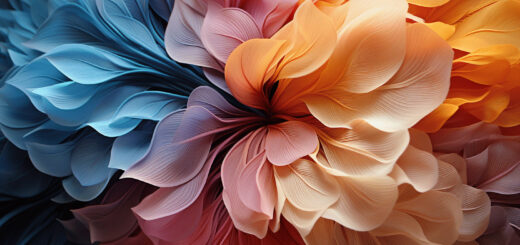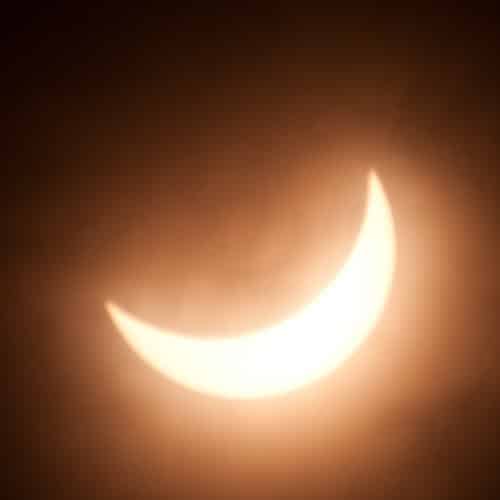Creative Techniques for Capturing Reflections in Water
Water reflections have always been a captivating subject for photographers. The way light dances on the surface of water, creating stunning mirror-like images, is truly mesmerizing. Whether you’re shooting a serene lake, a bustling cityscape reflected in a puddle, or a sparkling ocean, capturing water reflections can add a unique and ethereal touch to your photographs.
In this article, we’ll explore a variety of creative techniques that will help you capture stunning water reflections. From the best practices for shooting reflections to enhancing them with filters, and even exploring different angles and compositions, we’ll cover it all. So grab your camera, and let’s dive into the world of capturing reflections in water!
Best Practices for Shooting Water Reflections
When it comes to capturing stunning water reflections in your photographs, there are a few key practices that can help you achieve the best results. Whether you’re shooting a serene lake, a flowing river, or even a puddle after a rainfall, these tips will help you enhance the visual impact of those captivating reflections.
Shoot in Manual Mode
To have complete control over your camera settings and maximize the quality of your water reflections, it’s best to shoot in manual mode. This allows you to adjust the shutter speed and aperture settings to achieve the desired effects. By manually adjusting these settings, you can have more control over the exposure and capture the perfect balance of light and shadow.
Consider Weather Conditions
The weather conditions play a crucial role in the clarity and definition of water reflections. When shooting water reflections, consider the following weather conditions:
- Calm weather: Choose a day when the wind is light or non-existent. Calm weather conditions ensure a smooth water surface, allowing for clearer and more defined reflections.
- Clear skies: Opt for a day with clear skies to minimize any distractions and ensure that the focus is solely on the water reflection. Cloudy or overcast skies can create diffused lighting, which might not be ideal for achieving sharp and vibrant reflections.
Adjust Aperture and Shutter Speed
Two essential camera settings to pay attention to when shooting water reflections are the aperture and shutter speed. By adjusting these settings, you can enhance the details and intensity of the reflections:
- Aperture: Consider using a smaller aperture (higher f-stop number) to increase the depth of field. This will ensure that both the foreground and background are in focus, resulting in crisper reflections with more intricate details.
- Shutter Speed: To capture the smoothness and gentle ripples on the water’s surface, experiment with slower shutter speeds. Slower shutter speeds will create a longer exposure time, resulting in a soft and dreamy effect on the reflections.
Capture During Golden Hours
For the most striking and impactful water reflections, plan your shoot during the golden hours – the first hour after sunrise or the last hour before sunset. During these times, the light is soft, warm, and golden, casting a beautiful glow on the water and enhancing the reflective qualities. The contrasting colors and the magical ambiance of the golden hour will elevate your water reflection photographs to new heights.
Remember, practice makes perfect. Experiment with different settings, angles, and compositions to find your unique style. Keep these best practices in mind, and you’ll be well on your way to capturing mesmerizing water reflections that will leave a lasting impression on viewers.
Enhancing Reflections with Filters
Reflections can add a unique and captivating element to your photographs. They can create a sense of depth, add visual interest, and highlight certain aspects of a scene. However, capturing reflections effectively can sometimes be challenging due to factors like glare and uneven exposure. This is where filters come in handy.
Use a Polarizing Filter
One of the most popular filters for enhancing reflections is the polarizing filter. This filter works by reducing glare and unwanted reflections from non-metallic surfaces, such as water or glass. By using a polarizing filter, you can achieve the following benefits:
- Reduced glare: The filter helps to minimize the harsh glare that can often overpower reflections, allowing the true beauty of the reflective surface to shine through.
- Enhanced color saturation: Along with reducing glare, a polarizing filter also enhances color saturation, making the reflections appear more vibrant and intense.
- Increased contrast: By reducing scattered light, the filter can enhance the contrast between the reflection and its surroundings, resulting in a more visually striking image.
To use a polarizing filter, simply attach it to the front of your camera lens, rotate it until you achieve the desired effect, and then capture your shot. You can adjust the angle of the filter to control the level of polarization and the strength of the effect.
Utilize a Graduated Neutral Density Filter
Another useful filter for enhancing reflections is the graduated neutral density (ND) filter. This filter is especially helpful when you’re dealing with scenes that have a stark contrast in brightness between the reflection and the subject. Here’s how a graduated ND filter can assist you:
- Balanced exposure: A graduated ND filter allows you to balance the exposure between the bright reflection and the darker subject, preventing one from being overexposed or underexposed.
- Retained details: By equalizing the exposure, you can ensure that both the reflection and the subject have well-preserved details, resulting in a more visually pleasing and balanced composition.
- Smooth transitions: Graduated ND filters are designed with a gradual transition from dark to clear, allowing for seamless blending between the filtered and non-filtered areas of the image.
To use a graduated ND filter, attach it to your lens, align the dark portion of the filter with the brighter area (such as the reflection), and adjust the position of the filter until you achieve the desired effect. This will balance the exposure and create a harmonious blend between the reflection and the subject.
In conclusion, filters can be valuable tools for enhancing reflections in your photographs. Whether you’re reducing glare and enhancing color saturation with a polarizing filter or balancing exposure with a graduated ND filter, these accessories can help you capture stunning and captivating reflections that truly stand out.
Exploring Creative Techniques
Photography is an art form that allows us to capture the beauty of the world around us. While there are certainly many traditional ways to capture stunning images, there is also room for experimentation and creativity. By trying out different techniques, you can push the boundaries of what is possible with your camera and create truly unique and captivating photographs. In this article, we will explore some creative techniques that you can use to take your photography to the next level.
Try Different Angles and Compositions
When taking photos, it’s easy to fall into the habit of shooting from eye level. However, changing your perspective and trying out different angles can lead to more interesting and dynamic compositions. Get down low to the ground or climb higher to get a bird’s-eye view. Experiment with shooting from unusual perspectives to capture scenes in a fresh and innovative way.
Experiment with Slow and Fast Shutter Speeds
Shutter speed plays a crucial role in photography, and it can have a dramatic effect on the final image. By experimenting with both slow and fast shutter speeds, you can create different effects and capture unique moments.
- Slow shutter speeds: Using a slow shutter speed allows you to capture movement and create stunning motion blur effects. This technique can be particularly effective when photographing flowing water or moving subjects like cars or people.
- Fast shutter speeds: On the other hand, using a fast shutter speed freezes action and captures every detail. This technique is great for capturing fast-moving subjects or moments that happen in the blink of an eye.
Capture Reflections in Low Light
Reflections can add a touch of magic to your photographs, especially when captured in low light conditions. When the light is soft and dim, the reflections appear more ethereal and dream-like. Look for bodies of water, windows, or other shiny surfaces to capture captivating reflections. Experiment with different angles and compositions to create unique and mesmerizing images.
Utilize Still Water and Tripod
When shooting reflections, still water can be your best friend. Find a calm lake, pond, or any body of water with minimal movement. Placing your camera on a sturdy tripod will help you keep it steady and capture crisp and clear reflections. This technique is particularly useful for capturing reflections of landscapes or stunning architecture.
Utilize Reflective Surfaces
Don’t limit yourself to natural bodies of water when it comes to capturing reflections. Reflective surfaces like puddles, glass windows, or even polished metal can provide exciting opportunities for creative photography. Look for these surfaces in your surroundings and experiment with different angles to capture unique reflections.
Incorporate Objects in the Water
Adding objects to the water can add depth and interest to your photographs. Whether it’s a flower, a leaf, or a floating object, these props can create a focal point and add a sense of scale to your images. Experiment with different objects and compositions to create visually compelling photographs.
Shoot from Low Angles
To create unique and compelling photographs, try shooting from low angles. Getting closer to the ground can create a sense of grandeur and drama. This technique is particularly effective when photographing subjects like architecture or landscapes. Explore different vantage points and experiment with different angles to capture stunning images.
Post-Processing Corrections
While capturing a great photo in-camera is important, post-processing can help enhance and refine your images even further. Consider cropping and straightening your photos to improve the composition and remove any distracting elements. Additionally, adjusting the brightness, contrast, and colors can help bring out the best in your photographs.
Try Long Exposure Shots
Long exposure photography involves using longer shutter speeds to capture motion blur. This technique is often used with moving water, creating a smooth and silky effect. Experiment with long exposure shots to capture the beauty and dynamism of flowing water or to create a sense of movement in your images.
By exploring these creative techniques, you can expand your photography skills and capture stunning and unique images. Remember to experiment, take risks, and let your creativity guide you. Go out into the world with your camera in hand and let your imagination run wild. Your next great shot may be just a click away!
Read more:
Conclusion
In conclusion, capturing reflections in water can add a dynamic and artistic element to your photographs. By following the best practices for shooting water reflections and exploring creative techniques, you can elevate your photography skills to the next level. Remember to experiment with different angles, compositions, and shutter speeds to create unique and eye-catching images. Don’t be afraid to incorporate objects in the water or utilize reflective surfaces to enhance your compositions. And don’t forget to utilize the power of post-processing to make any necessary corrections and add a personal touch to your photos.
For more photography tips, tutorials, and camera reviews, be sure to visit Wim Arys Photography at Wimarys.com. Unlock your creative potential and capture stunning reflections in water with ease!
Frequently Asked Questions
- What are some creative techniques for capturing reflections in water?
Some creative techniques for capturing reflections in water include using a polarizing filter to reduce glare, shooting from a low angle to capture more of the reflection, experimenting with long exposure for smooth and ethereal reflections, and using a tripod for stability.
- What time of day is best for capturing reflections in water?
Early morning and late afternoon, also known as the golden hours, are generally the best times to capture reflections in water. The soft light during these times enhances the colors and adds a magical quality to the reflection.
- How can I enhance the reflections in my water photography?
To enhance reflections in your water photography, you can try using a wide-angle lens to capture a larger surface area, shoot in calm weather conditions to minimize ripples, experiment with different shutter speeds to achieve different reflection effects, and look for interesting subjects or patterns that can create captivating reflections.
- What compositions work well for capturing reflections in water?
Compositions that work well for capturing reflections in water often involve symmetry and balance. Look for subjects with strong lines or interesting shapes that can be reflected in the water, frame the reflection in a way that creates a visually pleasing composition, and consider including other elements like boats, buildings, or trees to add depth and interest to the image.
- Are there any post-processing techniques to enhance water reflections?
Yes, you can enhance water reflections in post-processing by adjusting the contrast, saturation, and clarity of the reflection, using tools like the graduated filter or adjustment brush to selectively enhance certain areas, and applying creative filters or effects to add a unique touch to the reflection.



